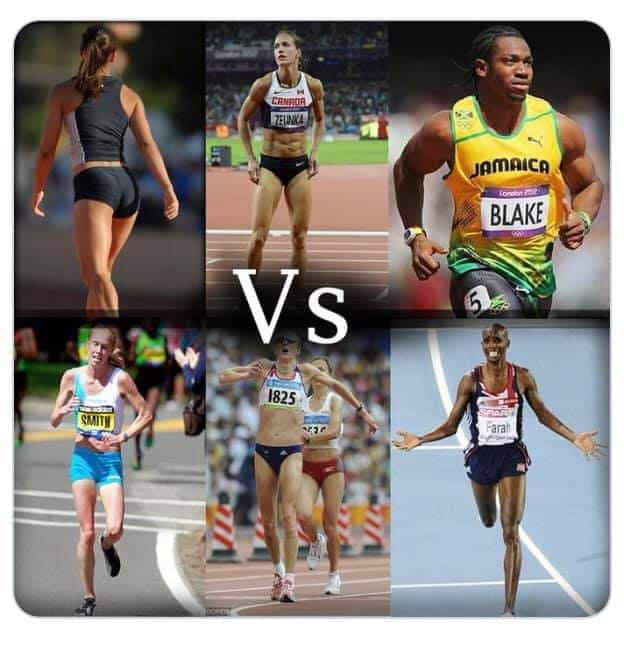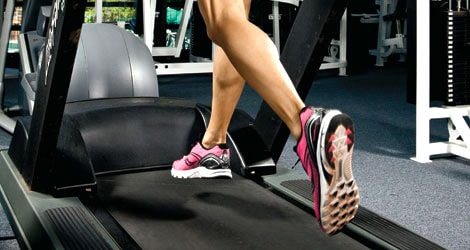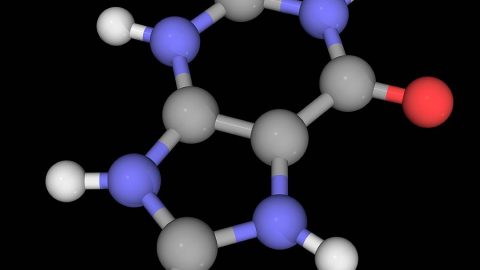Thirty plus years or so, I have been saying that running is the most overrated form of exercise on the planet, while resistance training (RT), the most underrated. At that time, there was little data to support that position and only dumb muscle heads lifted weights and those truly interested in staying fit, losing weight, and having a healthy cardiovascular system, to add to their sense of superiority, did aerobics, usually in the form of running. The “enlightened” folks ran, the “knuckle draggers” lifted weights, and so it went for a long time. Even to this day, there’s plenty of people out there who think that, and they’re still wrong.
By running, I mean jogging, or what would be a moderate to low steady state type of running. That’s what I mean by running in this context. Other forms of running, such as sprint intervals and such, can be highly beneficial. My plan in this article is to lay out in broad strokes, with links to articles and studies, people can read up on that covers some of the claims and issues around running. The obvious comparison here is RT vs running, but while RT is superior to running for most effects some attribute to running as well as its own benefit, it’s not black and white at all. For example, there’s other modalities people can choose to get similar benefits seen with running in far less time, or less impact on joints*, or more beneficial movement patterns, etc., such as High Intensity Interval Training and such. So, it’s not like doing conditioning oriented work is to be avoided per se, it’s just that running has demonstrated itself to be sub par in most respects. The end of the day, much of it simply comes down to intensity, and most joggers/runners plod along and a lowish intensity for longer durations of time, whereas sprinting, various forms of HIIT/SIT, RT, etc, will be more effective all around for improving body composition (i.e., reduced bodyfat levels and or increased fat free mass) then running, as well as the benefits people associate with running, such as cardiovascular health and cardiorespiratory capacity. As most know by now (hopefully!) the entire concept of “burning more far for fuel with low intensity exercise” to supposedly lose greater amounts of weight as the loss model was debunked a long time ago. You know, the 80’s called and wants it BS aerobics for weight loss claims back. Sorry 80’s, it’s dead and gone for all but the most clueless left clinging to that nonsense. If one wants to lose that belly fat, high intensity excise is what they want.
Personally, I think running – in the form of jogging – simply sucks for most things, and I’m not alone that assessment by many a qualified coach, but more on that later…
What I find is that every time I attempt to be honest about this topic, it causes extreme cognitive dissonance in the hard core running weenies because they’re so emotionally invested in running, usually due to neurotic running addiction, or the “runners high” as it’s referred to and anything that threatens of challenges that addiction, is rejected. Bottom line, for weight loss, general fitness, cardio vascular health, cogniive health, heart health, and pretty much all the claims made by proponents of running, running is sub-par at best compared to, or the equal of, well, just about anything else. Contrary to popular runner mythology, there’s nothing magical nor unique about running as it pertains to the usual reasons many run. Note, unlike the majority of my articles, this one contains links to non peer reviewed lay articles, but most do have links to the studies they mention within the articles, and or, are opinion pieces, opinions I tend to agree with, so sue me. In this case, there’s a lot to read for those who want to read it, or they can pick and choose as they see fit.
Here’s a bunch resources for people looking to start their research on the topic; really tip of the iceberg honestly. Some of it is RT Vs aerobics, some is related to running as it applies to most major claims of benefits. For example, occasional author for site and top coach, Charles Staley pulls no punches on his assessment of running here:
Another I like that does not beat around the proverbial bush on the topic.
Running Is the Worst Way to Get Fit.
Want to preserve your muscles and brain as you age? RT is the way to go! My last article on the topic via Life Extension Magazine:
Resistance Exercise Reduces Cognitive Decline
“But cardio is best for preventing heart disease while weight training is better for muscles!” some will claim, but again, studies find RT has unique effects cardio does not, and may be superior for preventing specific types of fat buildup in the heart, and Even a Little Weight Training May Cut the Risk of Heart Attack and Stroke. What about older adults? Yup, RT is more important for older adults to maintain physical and mental health vs. cardio work.
Is SIT The Shit?!
Best form of “cardio” work? Really want to lose fat and get into shape without spending a lot of time? I cover the difference between HIIT and SIT HERE, but here’s an excellent review of the studies examining HIIT vs SIT as well as moderate-intensity continuous training (MICT) with recs how to perform SIT and HIIT I recommend people use this page as a resource for all things HIIT/SIT related:
How Sprint interval training: burn 40% more fat than HIIT in 60% less time
*Note on the “running is bad for your joints” issue: The reader will note I have not touched on the whole joint issue. Many, including myself, have always felt running was hard on the joints, and competitive runners are injured often, but various studies have concluded running is not bad for your joints, so I’m going to leave that one alone. I’m still not totally convinced, but as a man of science, I must capitulate that the current data says it’s not hard on the joints, and may even be beneficial.
Who Should, and Should, Not Run!
“So there’s people who should run Will?!” some may be asking after all that. Yes! Those who enjoy running should run! If you enjoy it and get benefits from it, run on. As I say in seminars when people ask what’s the “best” form of exercise. My answer to that is, what ever it is people will actually do year in and year out and anything is usually better than nothing. Running makes people better at, well, running, and not much else really. If the sport you’re in requires running, then run. Note however many, if not most sports, such as soccer, football, basketball, tennis, etc., require sprinting, not jogging, so that again may be the type of running to really focus on. If you’re job requires you run then run, but again, police officers for example don’t chase people for miles they tend to sprint, so again, think about what the job actually requires vs doing what’s always been done. For those hell bent on running in the form of jogging, two essential things to get the most from it while limiting the negatives:
- Perform at least two whole body RT sessions per week to help preserve all important muscle mass and strength
- Vary the distances and intensities. Instead of doing your usual run, cut the distance in half and try to double your normal speed, or at least strive to, on occasion. Make sure Include sprint work too, and develop a program that rotates them effectively.
People who hate running should not run, unless they must as outlined above. People who should not run are those doing it because they feel compelled to due to some outdated and debunked notion of “ma fat burning and cardio conditioning” that they think only jogging can achieve, those focused on adding lean body mass, those who want to make their time spent exercising efficient as far as time spent for results given. Excessive running in the form of MICT eats up muscle tissue in a big way. Done as outline above, combined with adequate calories and protein, the negatives can be mitigated.

Conclusion.
Ok, “sucks” may be a bit harsh as it pertains running, but I’d still recommend hiking, biking, walking, rucking, KB swings, sled work, etc, etc over running as far as the steady state lower intensity stuff is concerned as far as benefits for effort. I have dumped a lot on the reader here, and could dump a lot more, but fact is, while running may not totally suck, it’s wildly overrated and over utilized by the vast majority of those who perform it, usually without any real basis as to why they do it, other than so called “runners high” and the fact that how others do it. If you enjoy it, don’t let a jaded SOB like me talk you out of it, but do it fully aware of why you’re doing it and don’t expect much in the way of fitness related results compared to other things you could be doing for less time… Me, I’m just too much of a pragmatist to run along knowing it’s not doing all that much for me compared to other endeavors. Your mileage (pun intended!) may vary.
Additional Sources Of Interest:
Training effects on endurance capacity in maximal intermittent exercise: comparison between continuous and interval training. J Strength Cond Res. 2009 Nov;23(8):2405-10.
Abstract
The purpose of this study was to examine the effects of 2 different training regimens, continuous (CT) and interval (IT), on endurance capacity in maximal intermittent exercise. Eighteen lacrosse players were divided into CT (n = 6), IT (n = 6), and nontraining (n = 6) groups. Both training groups trained for 3 days per week for 15 weeks using bicycle ergometers. Continuous training performed continuous aerobic training for 20-25 minutes, and IT performed high-intensity pedaling comprising 10 sets of 10-second maximal pedaling with 20-second recovery periods. Maximal anaerobic power, maximal oxygen uptake (V(O2max)), and intermittent power output were measured before and after the training period. The intermittent exercise test consisted of a set of ten 10-second maximal sprints with 40-second intervals. Maximal anaerobic power significantly increased in IT (p <or= 0.05), whereas V(O2max) increased in both training groups (p <or= 0.05). In the intermittent exercise test, the average of the total mean power output (1-10 sets) increased in both training groups (p <or= 0.05); however, the mean power output in the last stage (8-10 sets) and fatigability improved only in IT. Consequently, continuous aerobic training reduced lactate production and increased the mean power output, but there was little effect on high-power endurance capacity in maximal intermittent exercise. In contrast, although lactate production did not decrease, IT improved fatigability and mean power output in the last stage. These results indicated that the endurance capacities for maximal intermittent and continuous exercises were not identical. Ball game players should therefore improve their endurance capacity with high-intensity intermittent exercise, and it is insufficient to assess their capacity with only V(O2max) or continuous exercise tests.
Resistance training, visceral obesity and inflammatory response: a review of the evidence. Obes Rev. 2012 Jul;13(7):578-91.
Abstract
Intra-abdominal obesity is an important risk factor for low-grade inflammation, which is associated with increased risk for diabetes mellitus and cardiovascular disease. For the most part, recommendations to treat or prevent overweight and obesity via physical activity have focused on aerobic endurance training as it is clear that aerobic training is associated with much greater energy expenditure during the exercise session than resistance training. However, due to the metabolic consequences of reduced muscle mass, it is understood that normal ageing and/or decreased physical activity may lead to a higher prevalence of metabolic disorders. Whether resistance training alters visceral fat and the levels of several pro-inflammatory cytokines produced in adipose tissue has not been addressed in earlier reviews. Because evidence suggests that resistance training may promote a negative energy balance and may change body fat distribution, it is possible that an increase in muscle mass after resistance training may be a key mediator leading to a better metabolic control. Considering the benefits of resistance training on visceral fat and inflammatory response, an important question is: how much resistance training is needed to confer such benefits? Therefore, the purpose of this review was to address the importance of resistance training on abdominal obesity, visceral fat and inflammatory response.
Effect of exercise training intensity on abdominal visceral fat and body composition. Med Sci Sports Exerc. 2008 Nov;40(11):1863-72. doi: 10.1249/MSS.0b013e3181801d40.
Abstract
The metabolic syndrome is a complex clustering of metabolic defects associated with physical inactivity, abdominal adiposity, and aging.
PURPOSE:
To examine the effects of exercise training intensity on abdominal visceral fat (AVF) and body composition in obese women with the metabolic syndrome.
METHODS:
Twenty-seven middle-aged obese women (mean +/- SD; age = 51 +/- 9 yr and body mass index = 34 +/- 6 kg x m(-2)) with the metabolic syndrome completed one of three 16-wk aerobic exercise interventions: (i) no-exercise training (Control): seven participants maintained their existing levels of physical activity; (ii) low-intensity exercise training (LIET): 11 participants exercised 5 d x wk(-1) at an intensity < or = lactate threshold (LT); and (iii) high-intensity exercise training (HIET): nine participants exercised 3 d x wk(-1) at an intensity > LT and 2 d x wk(-1) < or = LT. Exercise time was adjusted to maintain caloric expenditure (400 kcal per session). Single-slice computed tomography scans obtained at the L4-L5 disc space and midthigh were used to determine abdominal fat and thigh muscle cross-sectional areas. Percent body fat was assessed by air displacement plethysmography.
RESULTS:
HIET significantly reduced total abdominal fat (P < 0.001), abdominal subcutaneous fat (P = 0.034), and AVF (P = 0.010). There were no significant changes observed in any of these parameters within the Control or the LIET conditions.
CONCLUSIONS:
The present data indicate that body composition changes are affected by the intensity of exercise training with HIET more effectively for reducing total abdominal fat, subcutaneous abdominal fat, and AVF in obese women with the metabolic syndrome.
Training effects on endurance capacity in maximal intermittent exercise: comparison between continuous and interval training. J Strength Cond Res. 2009 Nov;23(8):
Abstract
The purpose of this study was to examine the effects of 2 different training regimens, continuous (CT) and interval (IT), on endurance capacity in maximal intermittent exercise. Eighteen lacrosse players were divided into CT (n = 6), IT (n = 6), and nontraining (n = 6) groups. Both training groups trained for 3 days per week for 15 weeks using bicycle ergometers. Continuous training performed continuous aerobic training for 20-25 minutes, and IT performed high-intensity pedaling comprising 10 sets of 10-second maximal pedaling with 20-second recovery periods. Maximal anaerobic power, maximal oxygen uptake (V(O2max)), and intermittent power output were measured before and after the training period. The intermittent exercise test consisted of a set of ten 10-second maximal sprints with 40-second intervals. Maximal anaerobic power significantly increased in IT (p <or= 0.05), whereas V(O2max) increased in both training groups (p <or= 0.05). In the intermittent exercise test, the average of the total mean power output (1-10 sets) increased in both training groups (p <or= 0.05); however, the mean power output in the last stage (8-10 sets) and fatigability improved only in IT. Consequently, continuous aerobic training reduced lactate production and increased the mean power output, but there was little effect on high-power endurance capacity in maximal intermittent exercise. In contrast, although lactate production did not decrease, IT improved fatigability and mean power output in the last stage. These results indicated that the endurance capacities for maximal intermittent and continuous exercises were not identical. Ball game players should therefore improve their endurance capacity with high-intensity intermittent exercise, and it is insufficient to assess their capacity with only V(O2max) or continuous exercise tests.
Effect of Aerobic and Resistance Exercise on Cardiac Adipose TissuesSecondary Analyses JAMA Cardiol. Published online July 3, 2019.
Key Points
Question Are epicardial and pericardial adipose tissues regulated by both endurance and resistance training?
Findings In this secondary analysis of a randomized clinical trial including 50 individuals with abdominal obesity, endurance and resistance training significantly reduced epicardial adipose tissue mass by 32% and 24%, respectively. While resistance training reduced pericardial adipose tissue mass by 32%, there was no effect of endurance training on pericardial adipose tissue.
Meaning Endurance and resistance training have the potential to reduce cardiac adipose tissue mass and may have clinical potential given that excessive cardiac adipose tissue is associated with an increased incidence of cardiovascular disease.
Abstract
Importance Epicardial and pericardial adipose tissues are emerging as important risk factors for cardiovascular disease, and there is a growing interest in discovering strategies to reduce the accumulation of fat in these depots.
Objective To investigate whether a 12-week endurance or resistance training intervention regulates epicardial and pericardial adipose tissue mass.
Design, Setting, and Participants Secondary analysis of a randomized, assessor-blinded clinical trial initiated on August 2016 and completed April 2018. This single-center, community-based study included 50 physically inactive participants with abdominal obesity.
Interventions Participants were randomized to a supervised high-intensity interval endurance training (3 times a week for 45 minutes), resistance training (3 times a week for 45 minutes), or no exercise (control group).
Main Outcomes and Measures Change in epicardial and pericardial adipose tissue mass assessed by magnetic resonance imaging, based on a prespecified secondary analysis plan including 3 of 5 parallel groups.
Results Of 50 participants (mean [SD] age, 41 [14] years, 10 men [26%]; mean [SD] body mass index [calculated as weight in kilograms divided by height in meters squared], 32 [5]), 39 [78%] completed the study. Endurance training and resistance training reduced epicardial adipose tissue mass by 32% (95% CI, 10%-53%) and 24% (95% CI, 1%-46%), respectively, compared with the no exercise control group (56% [95% CI, 24%-88%]; P = .001 and 48% [95% CI, 15%-81%]; P < .001, respectively). While there was a nonsignificant reduction in pericardial adipose tissue mass after endurance training (11% [95% CI, −5% to 27%]; P = .17), resistance training significantly reduced pericardial adipose tissue mass by 31% (95% CI, 16%-47%; P < .001) when compared with the no exercise control group. Compared with the no exercise control group, there was an increase in left ventricular mass by endurance (20 g [95% CI, 11%-30%]; P < .001) and resistance training (18 g [95% CI, 8%-28%]; P < .001). Other cardiometabolic outcomes remained unchanged after the 12-week trial period.
Conclusions and Relevance In individuals with abdominal obesity, both endurance and resistance training reduced epicardial adipose tissue mass, while only resistance training reduced pericardial adipose tissue mass. These data highlight the potential preventive importance of different exercise modalities as means to reduce cardiac fat in individuals with abdominal obesity.
Will Brink is the owner of the Brinkzone Blog. Will has over 30 years experience as a respected author, columnist and consultant, to the supplement, fitness, bodybuilding, and weight loss industry and has been extensively published. Will graduated from Harvard University with a concentration in the natural sciences, and is a consultant to major supplement, dairy, and pharmaceutical companies.
His often ground breaking articles can be found in publications such as Lets Live, Muscle Media 2000, MuscleMag International, The Life Extension Magazine, Muscle n Fitness, Inside Karate, Exercise For Men Only, Body International, Power, Oxygen, Penthouse, Women’s World and The Townsend Letter For Doctors.
He’s also been published in peer reviewed journals.
Will is the author of the popular e-books, both accompanied by private members forum access , Bodybuilding Revealed & Fat Loss Revealed.
You can also buy Will’s other books on Amazon, Apple iBook, and Barnes and Noble.






